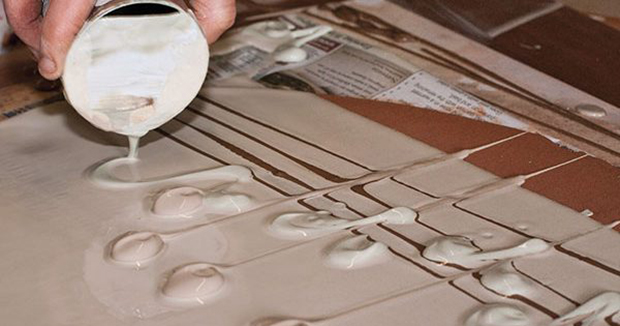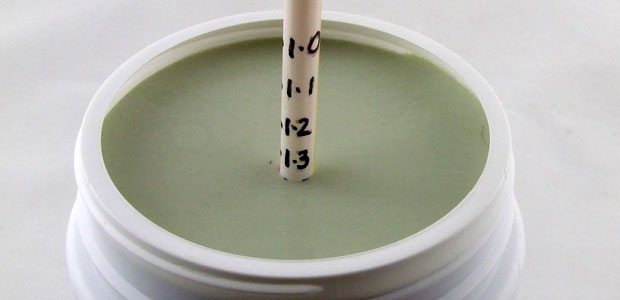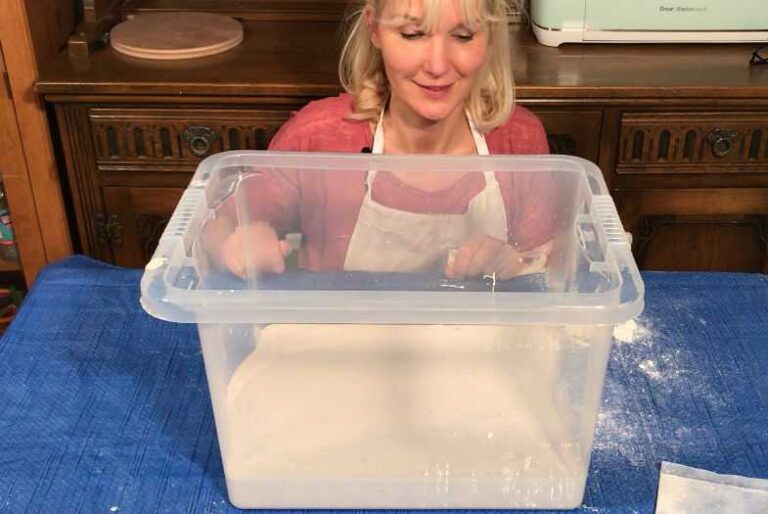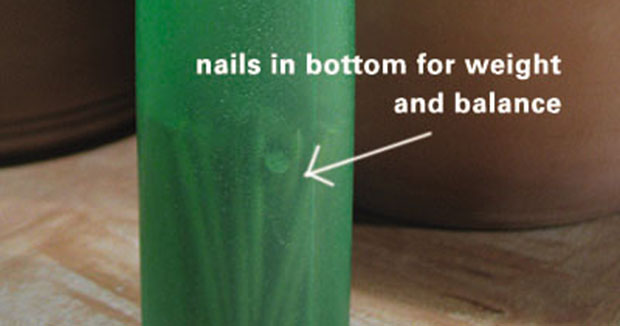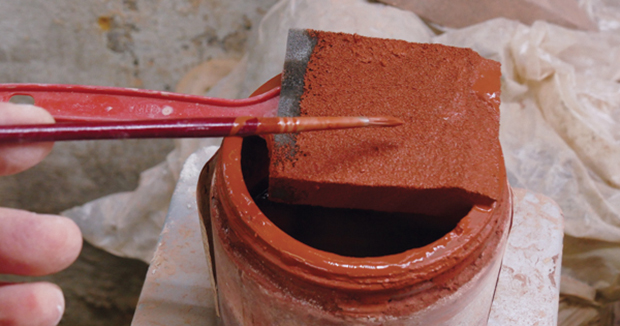
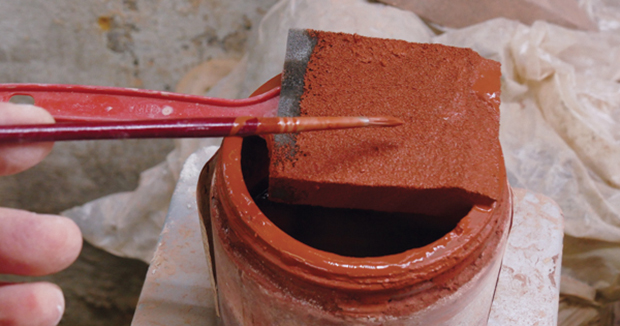
Painting clean lines on clay can be a mess if you don’t have the right tools. Preston Rice was in need of a way to produce clean brush strokes for a lettering project, but experienced problems when his brush was overloaded with stain. He set out to find a way to load stain onto a brush without overloading it, and after seeing Preston’s sponge paint brush hack in the
Ceramics Monthly archive, I knew I had to try it out. Not only can you use a sponge paint brush as a palette, but they are also great for cleaning up glaze and stain! –Jennifer Poellot Harnetty, editor
PS. Preston Rice is one of the moderators of the Ceramic Arts Network Community Forum. Check out the Forum when you are stumped in the studio! You are sure to find the answers you need!
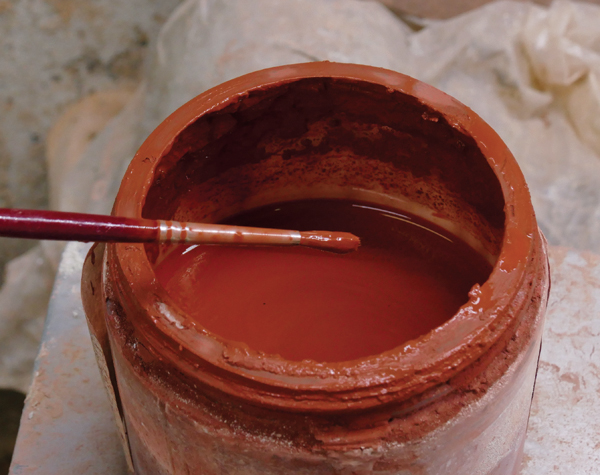
I was recently working on a project that needed accented, inlaid lettering, as well as lettering brushed over top of slip using a commercial stain. Using a #1 and a #0 brush,
I worked on a piece of bisqueware to practice. After trying unsuccessfully to paint neatly with a somewhat overloaded brush (1), I decided to unload some glaze from the brush by wiping it off onto a sponge, but it was too porous.
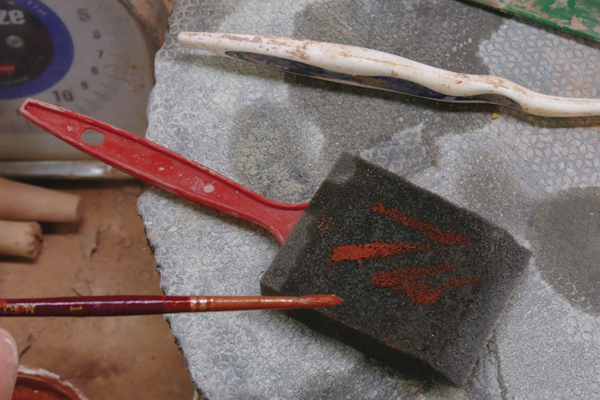
I tried a sponge paint brush instead, and found that it worked well (2). I then removed a step by loading the sponge brush directly from the stain container and then loading my brush from that (3). This worked quite well, and with some practice, I was able to add the lettering to the pot.
The brush stroke in image 4 that is closest to the engraved numbers was made with an overloaded brush dipped into the jar of stain. The stroke to the right of that was made with a brush that has been loaded in the jar and then unloaded on the sponge paint brush. The next single stroke and the partial number 3 were made with the brush loaded from a sponge paint brush that has been dipped in the stain (4).
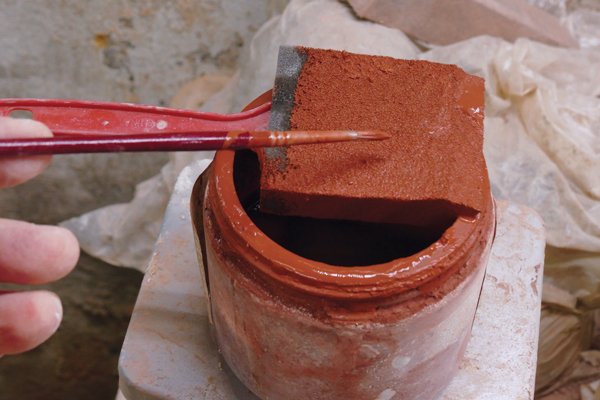
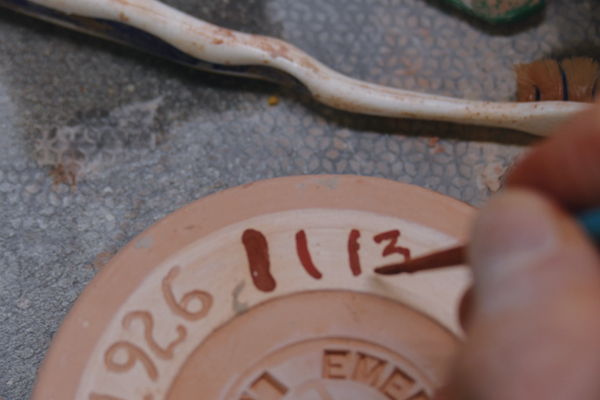
Lid and Gallery Cleaner Upper
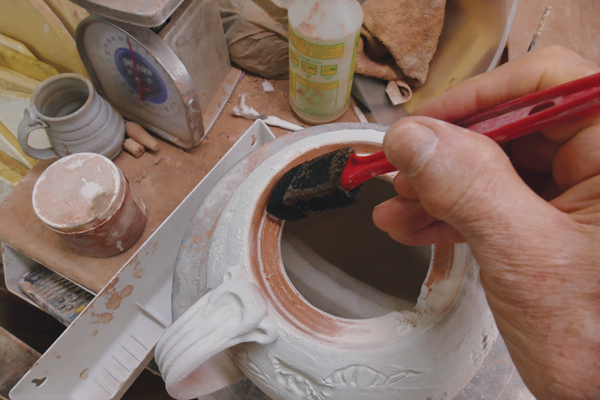
A sponge paint brush also works quite well to clean galleries of lids and pots. The hard handle that supports the sponge is firm enough to apply pressure to remove glaze from the gallery’s square corner (5).

